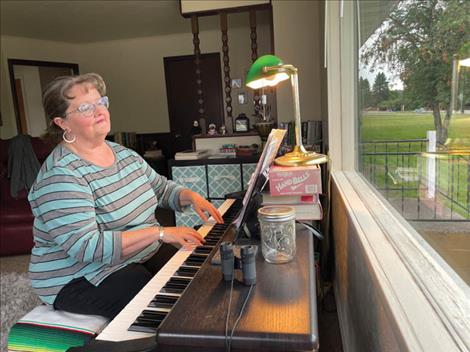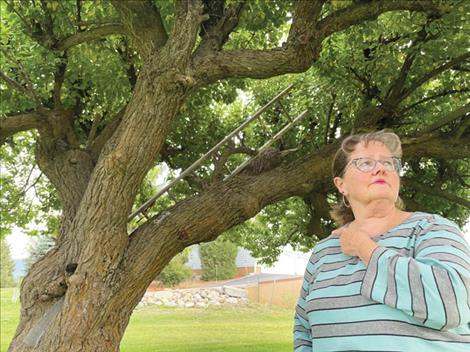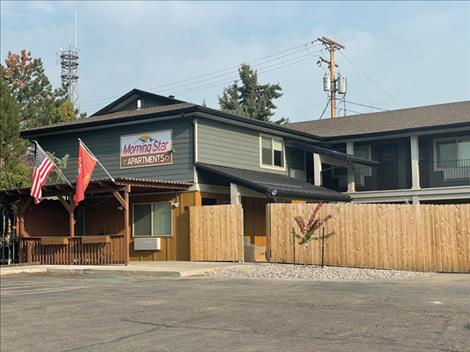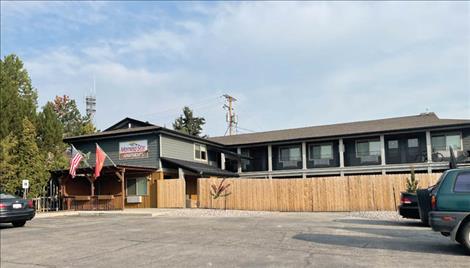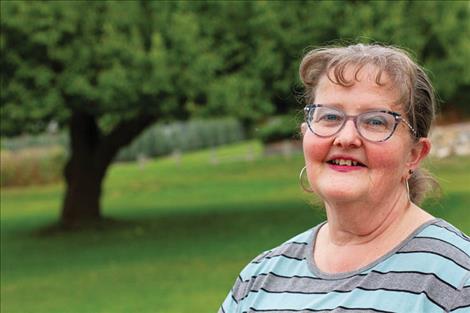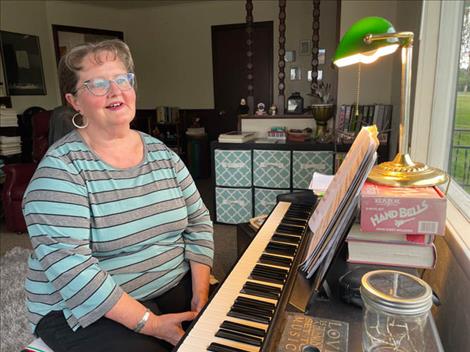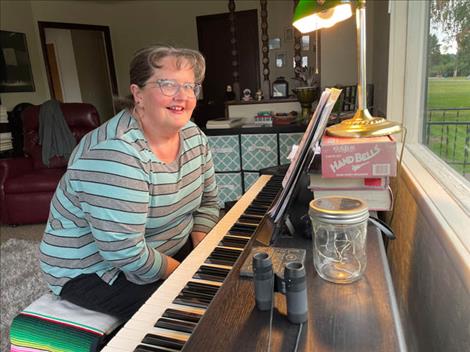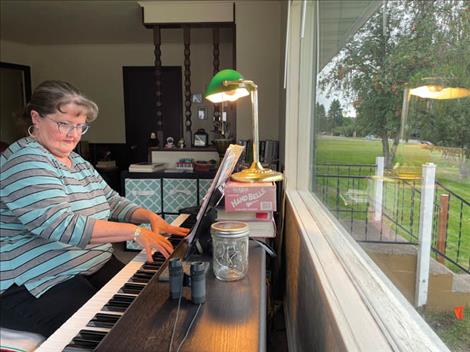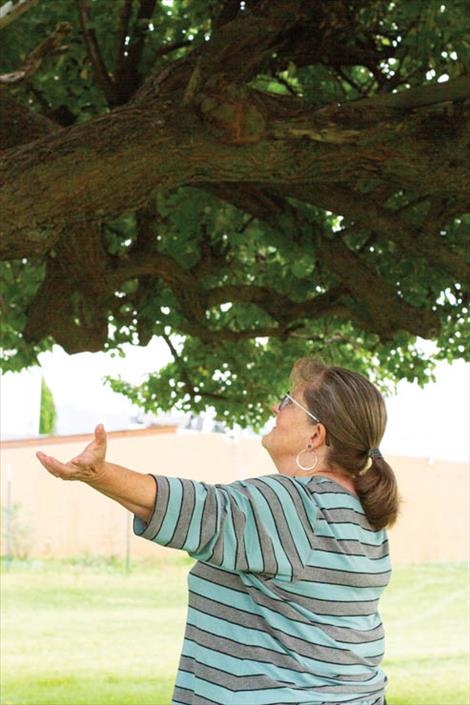No place like home
Stakeholders work to offer affordable housing as prices continue to skyrocket
Hey savvy news reader! Thanks for choosing local.
You are now reading
1 of 3 free articles.
MONTANA — Six years ago Angela Claver sold her home in Great Falls and decided to move to Polson to work in the public library. She had visited friends in the area previously and knew that finding housing wouldn’t be easy. Even then, housing was hard to come by, especially something affordable. She moved into the Lakeview Village in Polson and lived there for two years, four months.
“I felt very fortunate when I got into those apartments,” she said. “I just made it work for a couple of years.”
Claver lived frugally and after her stay in Lakeview Village, she was able to snag a place in the Lake Place Apartments.
The lakefront apartments were a nice upgrade. But in May, life at the apartments with an idyllic lakefront view turned stormy, as the owners of the building decided they wanted to upgrade the building, replace the tenants living there, and charge more.
“The price they put on my unit is comparable to my classmate’s unit in Spokane,” Claver said.
On May 24, Claver says that she and her neighbors were given notice that they would need to move by June 1.
“Even they knew that was pretty near impossible,” Claver said.
The housing market has boomed in the pandemic nationwide, as supply chain issues abounded for building materials including everything from lumber to appliances, causing a steep rise in prices. The Windemere Real Estate 2021 Q2 Market Update was released Aug. 9. The company says that while some Montana counties have seen a slow down in the mad grab for property, Lake County real estate remains in demand, with the number of home sales in the second quarter of 2021 up 21.3% compared to the same quarter last year. The prices of those homes has also risen, on average 57.6% in the same time frame.
Zillow lists the average price of a home in Lake County, as of August, at $383,740.
Claver said she considered getting qualified to buy, but with the market and prices the way they are currently, she knew that finding an affordable, available home in the time frame given would be nearly impossible.
Her search for rentals also came up empty at first. Her only solid lead was a coworker who offered a basement. She checked into finding a storage unit to store her things.
“There isn’t even a storage unit to be had,” Claver said.
She was feeling pretty desperate one night, playing piano for the Port Polson Players, praying that the situation would resolve. “I’m telling God this is not OK. I have no place to live,” she said.
Out of the blue, folks at rehearsal brought up the housing situation, and Claver got a lead through a fellow member of a knitting group she attends.
“I think it was the grace of God and the help of good people in Polson,” Claver said of being able to find a house to rent.
Still, the sting of the process lingers. Claver says she’s not bitter over the ordeal and agrees that property owners have a right to make profits, but the way her eviction was handled left a sour taste.
Claver was able to move out of her Lake Place apartment the first week of August. She was served papers telling her to leave July 23.
“They told me I had not acted in good faith... They knew what kind of climate they were in and they knew the effort was being made,” Claver said.
She worries about her former neighbors. Several were in their 80s or 90s and with health issues when they received notice to move.
“You’re 90 years old and you are booted out of your house,” she said. The situation, she added, boils down to greed. “They’re just being greedy. They are exploiting the 103 feet of Lakeshore.”
A seventh generation Montanan, Claver is thankful that her community connections run deep and helped her stay.
“It did work out good for me because of other people,” Claver said. “Do try to stay connected. Don’t try to do it alone. I wish people weren’t so greedy and opportunistic. Polson does not have a whole lot of choices in the middle ground. The struggle is real.”
For those who don’t have support, the housing crisis can be even more acute.
Missoula lies an hour’s drive away from Polson, but it provides one of the only homeless shelters in the area, and the largest shelter in the state.
Last week a dozen tents were seen outside the Poverello Center, and team leaders told the media that it’s because warming shelters haven’t opened yet for the year and demand for the shelter’s limited space is high.
Some of those people seeking shelter are from Lake County.
“I fielded a call from a young woman last week who was losing her housing in Polson and trying to find resources,” Sarah Penix, communications coordinator for the Poverello Center said. “She wanted to stay in Polson because that is where her kids were, but was unable to afford a motel to tide her over until she found another housing option. She said that it would be tough to secure a place to live in Polson while staying in Missoula but she could not think of other options.”
The situation isn’t ideal, but many people from Lake County ended up at the shelter over the years, Penix said.
“I did a brief check-in with staff and they can think of guests from St. Ignatius, Arlee, Polson, Pablo,” Penix said. “People do not want to be in Missoula and it ends up being a hassle doing day-to-day business there while sheltering in Missoula. This isn’t unique to the Mission Valley - we also see people from the area of Idaho between here and Spokane.”
Finding housing solutions is tough and some ideas put forth by local governments have been shot down at the state level. In April, Governor Greg Gianforte signed House Bill 259. The new law makes it illegal for cities to require that builders provide some affordable homes in developments. This killed affordable housing programs in Bozeman and Whitefish, which had put inclusionary housing measure in place in 2018.
Montana State Senator Greg Hertz of Polson said in the second reading of the bill on the Senate Floor in March that supply issues were the root of the housing shortage.
“I believe in local control, but when they infringe upon property rights then we have to stop them,” Hertz said.
Lake County Commissioner Gale Decker says local officials are aware of the housing issues community members face, but unfortunately, they don’t have the resources to fix the problem.
“The county does not have the ability to have much of an impact on affordable housing,” Decker said. “We do not have the finances to build housing or manage if we were able to build.” Out-of-area workers have had trouble finding housing when trying to come on board to work for the county. “We are investigating if we could construct some housing that would be made available to county employees. The cost is significant as any project would have to go through sub-division review and environmental assessment. Providing affordable housing is complicated and no one seems to have any good answers.”
While one might think that skyrocketing property values would mean an increase to the county’s coffers, that’s not really the case.
Commissioner Bill Barron explained how Montana’s property tax system works. “The value of your property, whether it goes up or down, plays a very small part in the county’s tax revenue,” he said. “Several years ago when the residents of Montana passed a ‘Citizens Initiative’ to freeze property taxes, our state legislature put the current tax system in place. Each year we start with the previous year’s tax revenue and add an inflation adjustment. The adjustment is ½ of 1% of a rolling three-year average of inflation. We then get to add the tax revenue from new construction. This is the formula that is used for the current year tax revenue regardless of your property value.”
Barron said the county’s new additional property tax revenue for the year will be $347,160.
“This is the highest level of new growth tax revenue I have witnessed in the last 12 years as commissioner,” Barron said. “Our finance officer said it averages around $50,000 a year.”
According to Decker, another problem is at issue. While more and more people might be coming to the county, they aren’t bringing brick and mortar business or industries to help grow the work force.
“A bigger problem in our county is that about 82% of our property taxes are generated from private property taxes,” Decker said. “This is second highest in the state. There is little industry here that generate taxes, so the burden falls on property owners.”
But that problem comes with a “what came first, chicken or the egg” question? As the price of brick and mortar buildings skyrocket, it drives up the cost of starting a business, making the startup costs of business also rise. Businesses that already exist are facing labor shortages, and some are closing because of it, meaning even less of a tax base for the county.
On Sept. 13, Farmhouse, a cafe in Lakeside, announced it was closing after seven years in business.
“Despite our best efforts, we are unable to find enough staff to provide you with the level of service that you deserve and that you’ve come to know here at Farmhouse,” the cafe posted on social media.
The need for affordable housing isn’t limited to Lake County. It’s a national issue, and in the first week of September the Biden administration rolled out plans to build 100,000 affordable homes over the next three years nationwide. Projections from the National Low Income Housing Coalition show that’s just a drop in the bucket to what’s needed, as the group estimates the nation needs 6.8 million affordable homes to meet demand.
Even as the federal government tries to try out new programs to ease the housing crunch, there’s evidence that stakeholders in Montana are underutilizing currently available federal resources.
A December 2020 report from the Bureau of Business and Economic Research at the University of Montana states there were 344 low-income housing units in Lake County utilizing federal low-income housing tax credits as of that time. There were 7,977 total apartment units developed using tax credits in Montana at that time.
This federal program requires the owners of the properties to commit to keep the housing affordable for 30 years, however, owners can opt out of the program after 15 years if they choose. They have to put the units on the market, but if no qualified buyers are found, the owners can be released from the program early.
“In areas with relatively booming housing markets, selling the property may be a more attractive option than continued compliance,” the BBER report notes. “Over the next five years, 564 LIHTC housing units in Montana will be facing this potential of being lost to the market.”
The bureau projects that 28 of the affordable housing units in Lake County could be lost by 2025 due to the booming market.
“Since 2012, Montana has only financed 717 affordable housing units (including acquisition, rehabilitation, and new construction) with federal 4 percent low-income housing tax credits, illustrating the difficulty this program has for attracting developers in Montana,” the bureau concluded. “In this same period of time, Montana has abandoned $949 million in tax-exempt private activity bonds (PABs).”
PABs can be used to finance 4 percent low-income housing tax credits. Another program, which offers 9 percent low-income housing tax credits has unmet demand in the state.
“Since 2016, an average of $62 million per year in 9 percent low-income housing tax credit requests has been denied due to lack of funding,” the bureau explained. “These projects would have significantly expanded the inventory of affordable housing in Montana. A state LIHTC program similar to those implemented in other states would likely allow developers to leverage 4 percent federal tax credits which are currently unutilized in order to increase the supply of affordable housing in the state.”
The bureau concludes that the housing issue is a major one for Montanans.
“With relatively few affordable homes available for households earning a low income, and with much of the existing affordable inventory aging and in need of rehabilitation, many households earning a low income are being priced out of housing markets,” the report’s author, Brandon Bridge, economist and director of bureau forecasting noted. “We are now facing ever expanding economic challenges, and these issues and concerns are not going away or getting better. When housing becomes unaffordable, it imposes costs on entire communities, but the most vulnerable in society bear the brunt of those costs. Housing affordability will likely be a challenge that Montanans continue to face in the coming years, and as such it deserves a place in public conversation.”
For two local groups, the housing issue is more than a conversation. It’s a pressing issue that’s being tackled by stakeholders in the community.
Earlier this year the Confederated Salish and Kootenai Tribe’s Housing Authority and the Tribal Public Defenders office came together to turn the old Starlite Motel in downtown Ronan into the valley’s first permanent supportive housing units by using federal CARES ACT funds.
The project created housing for 14 single individuals. It includes office space for a services coordinator and space for a caretaker. Supportive services for residents include legal consults, job readiness training, and mental health services.
“Every individual at Morning Star has a different set of circumstances, a unique story, but generally I would say that Morning Star provides safe, stable, affordable housing that meets people where they are,” said Susette Billedeaux of the Tribal Public Defenders office. “(Permanent supportive housing) is a housing first model, so once we can provide this safe space for someone to live then we have the supportive services available to meet their other needs. We’re not a zero-tolerance program, so when individuals mess up, it’s what humans do, it’s not the end of housing for them.”
Participants in the program only pay 30 percent of their income to live there, or in the case of joblessness, the housing authority steps in to help cover the cost. The demand for services outpaces the supply.
“We consider it to be successful, although it is still very early and a new program for us,” Billedeaux said. “Being able to provide safe, stable housing for 14 individuals is alone a success and we hope that there will be other success stories to add to that. We have received 54 applications total so far and only have 14 single occupancy units.”
In this case, a group of dedicated individuals is making a difference in the community.
“Morning Star wouldn’t have been possible without the support of the Tribal Council and the hard work of many different Tribal Programs working together,” Billedeaux said. “We also had the support of the whole Tribal Defenders staff and our Managing Attorney, Ann Miller, who agreed to take this on when asked by the Homelessness Task Force. We also have a great Coordinator, Stephen Hunt, working at Morning Star.”
A recent report shows that programs like supportive housing can help reduce taxpayer burden.
In 2019 the Corporation for Supportive Housing found that the top 10 percent of costliest individuals experiencing homelessness in Montana had an average of $53,463 in Medicaid expenditures in 2017.
Individuals in that same group averaged $49,906 in Medicaid claims.
Billledeaux said the Homelessness Task Force continues to work and explore more housing needs on the reservation.
To the north in Kalispell, the Northwest Montana Community Land Trust is accomplishing what seems impossible in today’s housing market: connecting individuals with affordable homes. Recently a family working with the group purchased a home for just $111,000, less than many undeveloped lots of land in the area.
The trust got its start in 2009 with the Neighborhood Stabilization Program, which gave $3 million to get foreclosure homes off the market. The funding purchased 52 homes, which were put into a trust. People participating in the program pay the mortgage for the home plus a $25 per month ground fee. When a participating family wants to move, they sell the home back to the trust, and are able to recover their initial investment plus 25 percent in the increased appraised value. The difference between the home’s value and what it’s sold for can then be used as a tax write off.
The program has never expanded to more than the 52 homes originally purchased. The trust’s new director, Kim Morisaki, is hoping to change that as 25 families, totaling 50 people sit on a growing waiting list to get into the homes. There are also talks to expand in the Mission Valley.
“We were established to serve Northwest Montana and are talking with Polson now to see if there is a way to work together going forward. I’m excited about that opportunity, but it is just a conversation at this time,” Morisaki said.
In addition to community trusts, Morisaki said there are other opportunities, and not all of them require public investment.
“There are solutions to the lack of housing, but we all need to be willing to think out of the box sometimes,” Morisaki said. “There are many solutions, and we need all of them because one size does not fit all. Other solutions besides the Community Land Trust Model are allowing developers to build more houses, apartments, townhomes, etc. within city limits in a more dense fashion. This allows more people to take advantage of the investment that the community has already made in services like water, sewer and police/fire – spreading the cost among more citizens and lowering the cost per household.”
One solution could be accessory dwelling units. These units are typically less than 1,000 square feet and are added to a property in the alley or backyard.
“The beauty of ADUs is that an older couple can build one on their property and their adult children and/or grandchildren can come home to live there,” Morisaki said. “Lots of people want to come back to Montana and this is one way to make that move easier. It also lets people have another source of revenue if they rent out one of the houses.”
Another solution might be for companies to offer housing. Morisaki is a Flathead Valley native who has spent many years in Japan before moving back home. She saw companies offer housing solutions while abroad.
“When I lived in Japan most companies had dormitories, apartments and/or houses that their employees could buy or rent,” Morisaki said. “It was a benefit that employees could use just like paid vacation or health insurance. It wasn’t free, it was just simply available. Lots of young adults just out of college lived in the company dorm where they had their own room with a kitchenette, but shared bathrooms and larger common spaces. Lots of the dorms actually had cafeterias - again, not free, just simply available to make it easy to attract and keep employees. So I think that there are ways for private investment and business owners to address some of these challenges.”
As Montanans work to find solutions, Morisaki sees her work with community land trusts as one possible piece to help keep housing affordable, and communities full of people needed to fill critical roles, not unlike Angela Claver, working for a modest wage as a public servant at the public library in Polson.
“I think every community should think of the CLT model as a one-time investment to ensure permanent homeownership attainability for people the community needs to run smoothly,” Morisaki said “Think about police officers, firemen, teachers, city/county office staff, newspaper reporters, hospital staff.”
She says anyone interested in the community land trust can get in touch at 406-261-8831.















